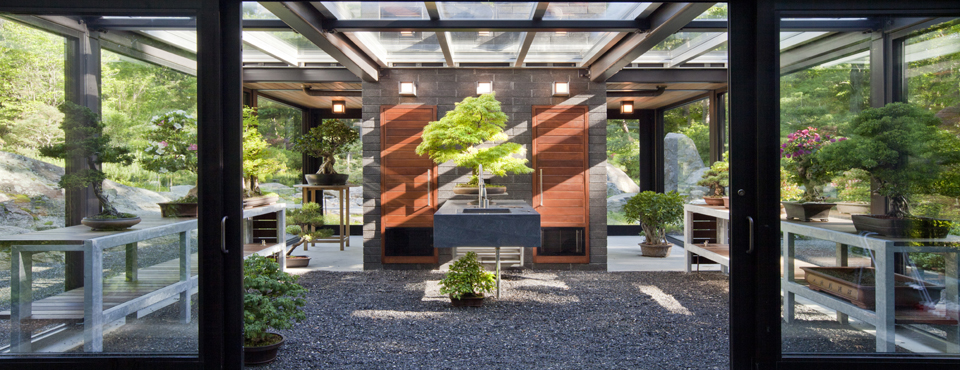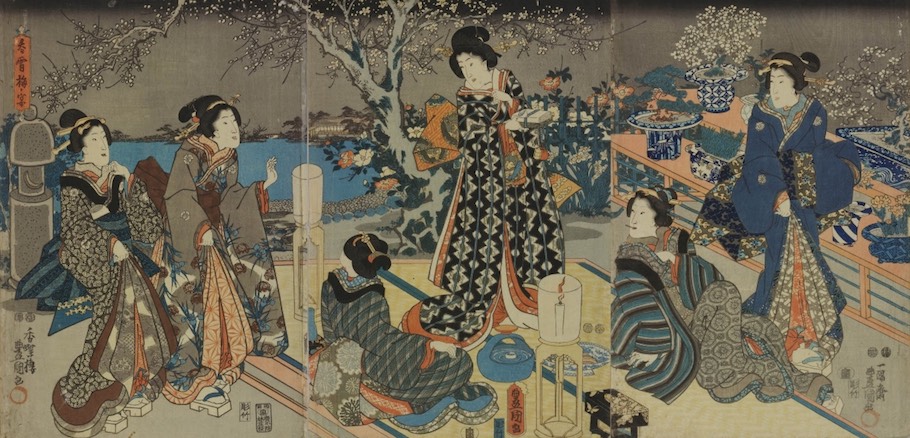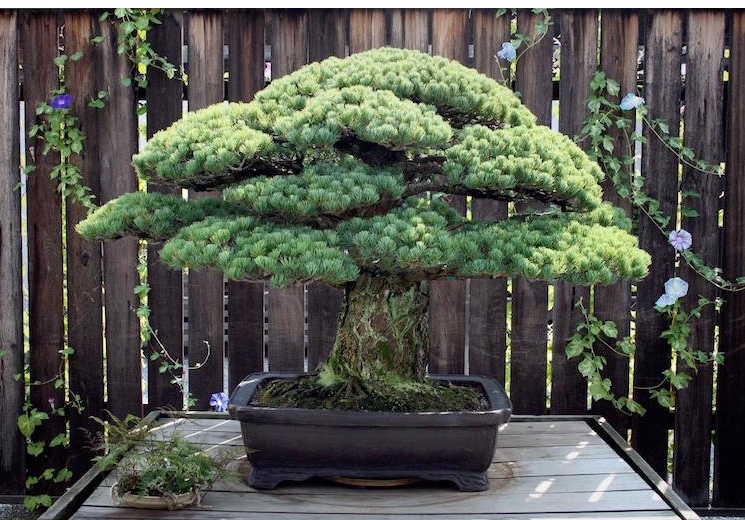Phillip Johnson’s “Glasshouse” in New Haven, Connecticut, is one of the icons of mid-century modern architecture. Steel-framed and glass-walled (hence its popular name) it seamlessly blends indoors and outdoors. It’s sophisticated simplicity has been the pattern for much early-21st century design. The photograph below, from my book, The Midcentury Modern Landscape, shows a Johnson-inspired modernist “cabin” in the woods, which provides a quiet domestic sanctuary for the homeowners and shelter for their cherished bonsai, miniature trees that have been carefully designed to recreate in miniature the landscapes from which they come.

Bonsai originated in China, making its way, some 800 years ago, to Japan along with a form of Chinese Buddhism that, stripped of its elaborate rites, became Zen Buddhism. Contemplative Zen monks abandoned the Chinese notions of the sacred and mystical properties associated with these small, tutored trees grown in even smaller pots, and instead saw in their carefully designed nano-landscapes a representation of the universe. Within a few hundred years, bonsai were being grown by everyone, and in the late 1700s, an annual show of miniature pine trees was begun in Kyoto.

The village of Takamatsu was the historic center of bonsai production and a number of nurseries supplied enthusiasts with starter plants. The Kinashi Bonsai Village remains prominent among the numerous nurseries around Takamatsu. Closer to home, the National Penjing and Bonsai Museum at the U.S. National Arboretum in Washington DC, there’s a collection of Japanese bonsai donated in 1976 by growers and collectors from around the world. The collection showcases one of the oldest bonsai trees in cultivation, a Japanese white pine (Pinus parviflora) named ‘Miyajima’ that has been in cultivation since 1635. This antique beauty is one of the many trees on view at the autumn bonsai exhibit, running from November 3-11 . Few things are as exquisite as a bonsai tree in its fall raiment.

Bonsai require attention and devotion to thrive, but an artistic eye and an ability to envision idealistic landscapes in miniature are absolutely necessary. There are special tools and techniques and numerous books on the subject to guide the beginner, one of the best being Ponderosa Pines as Bonsai by Larry Jackel, who is Curator of the bonsai collection at Denver Botanic Garden. It seems that Ponderosa pines are exceptionally well-suited to bonsai training, and on my gentle strolls through the less challenging trails around my house in Colorado Springs, I have seen seedling pines sprouting among the rocks and thought to myself, “If I was wanting to create a bonsai… .”
Panayoti Kelaidis is not unfamiliar with that thought himself; as a renowned plant collector with a specialty in rock garden plants, and Denver Botanic Garden’s Director of Outreach, he curates his blog Prairie Break to share his adventures in the wide world of horticulture. Writing last month, after a trek into the hinterlands of the Rocky Mountainswhere Ponderosa pines and other native plants cling to the tree line, he mused, “I’d rather celebrate the world as it should be: where character is rewarded with longevity and grace. Namely, the innumerable character pines that crowd the Rocky Mountains. Over a hundred of these were moved from Ironclad Ridge to Denver Botanic Gardens exactly forty years ago by a small team of Japanese Bonsai masters–one of whom (Larry Jackel) brought us back to see where the Botanic Gardens’ pines originated.”

Looking out over my garden as I write, with Pikes Peak as its backdrop, I consider the 30-plus-foot-tall Ponderosa outside my studio window. The crows use one particular branch to launch their fledglings into flight, ring doves canoodle among its sheltering arms, and hummingbirds dart through its needles; the resinous bark scents the breeze. In my mind’s eye, I envisage it and its attendant creatures, myself included, as tiny entities in a large universe, which is truly the reality of my world…and your’s too, I daresay.
© Ethne Clarke, 2018.


